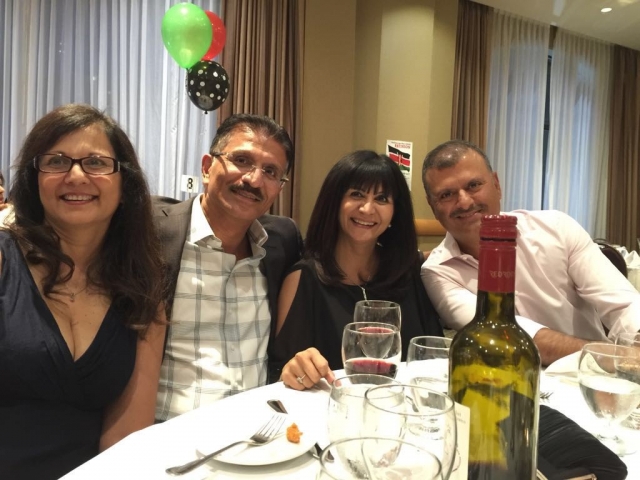My Time Travel Adventure: Chalkboard Thinking in an iPad World
By Imtiaz Manji on September 9, 2016 | 3 comments
I went to a reunion of old schoolmates – the Class of 1973 – recently. I know some people have mixed emotions about school reunions, but I was really looking forward to this.
Most of us had not seen each other or even been in contact much since we left that classroom in Mombasa, Kenya, in ’73, so we have had more than 40 years to wonder about each other. As the date approached, I found my thoughts drifting back again and again to my old classmates. The guys who always led the class in sports or in academics – how did they turn out? Those pretty girls I had crushes on – what would they be like today?
When we met on the night of the reunion it was like time-traveling in two directions at once. On the one hand, we had all aged of course, so it was like I had zipped forward from that classroom in Mombasa to see the people I had known only as young people transformed into middle-aged adults. But at the same time, being together again immediately brought us all back to those days back in that Mombasa school. It was like we were all young again as we relived our early years. To make the event even more memorable, we invited other family members from back home to join in the celebrations. Even the band members were from back in the day in Mombasa, and they re-united for this event.

As the night of dinner and dancing wore on (you’ll see from that video of me with my sister that I have some moves on a dance floor), I started thinking about how far we had all come, in so many ways. We were all born in Kenya, but we had moved out to the wider world. Like me, many of my classmates had lived in England, in Canada (where this reunion was being held), and in the U.S., among other places. Like me, many had set out to those countries with practically nothing in their pockets, but with big dreams in their heads.
And they all had been successful in their own ways, with their families, their passions, their businesses, but what struck me the most was how big-hearted my former schoolmates were, giving generously in the community and to so many philanthropic endeavors. So I couldn’t help but feel some pride on behalf of all of us. I thought back to that classroom where we all used to gather – a simple, bare room with one chalkboard at the front – and I marveled at how different the world is now.

That chalkboard was the most high-tech thing in our class. We did our research in a library because that’s where all the information was stored. As we moved on to higher education, the most sophisticated technology we used was a typewriter. A manual typewriter. We wrote letters that took days to reach the recipient. And here we were now, back together again, this time in the world of Google and instant messaging.
If you have been in dentistry for a generation or more, you can no doubt make your own comparisons, considering how quickly the technology in the profession has been evolving. And yet I often feel that maybe the technology is moving faster than the mindsets, that dentists are getting overwhelmed by the pace of change and the demands of today’s business realities. They are, in many cases, trying to apply chalkboard thinking in an iPad world.

The world of dentistry, like the world beyond it, is becoming more complex, even as we try to simplify it with technology. That’s something we have been thinking about at Spear for some time now. We have spent the last couple of years doing extensive research on how we can serve and support our clients in the most comprehensive way – a way that simplifies and makes sense of all the “busyness” of life in dentistry today. And our team has developed what I think is a very compelling solution.
So what is this solution? You’ll find out at the end of the month, when we unveil it at our Faculty Club meeting. But like that reunion party I just attended, I think you will find it is worth the wait.
(Click this link to read more dental practice management articles by Imtiaz Manji.)
Comments
September 11th, 2016
September 14th, 2016
September 16th, 2016